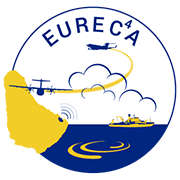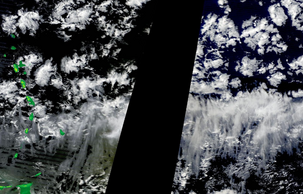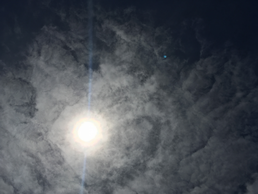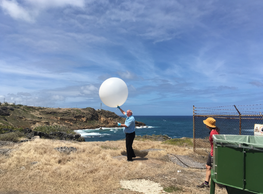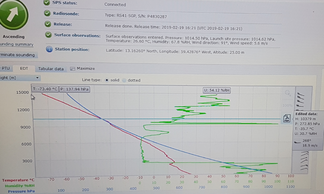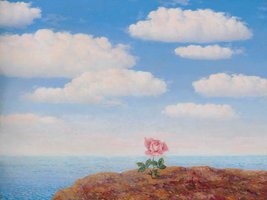20 Feb
Today is 20 Feb 2019, the end of our last pre-EUREC4A season. I will use this closing post as an opportunity to reflect briefly on the wonderful series of contributions that have been posted over the last weeks, and to inform you about the outcome of the short visit that a few of us had in Barbados, from which I am just returning.
As you know, the original motivation for the design of the EUREC4A field experiment was the wish to advance understanding of the coupling between shallow clouds and lower tropospheric mixing in trade-wind regimes. Several posts of the pre-EUREC4A season have shown how much the data from the NARVAL2 campaign, BCO and high-resolution model simulations have been useful to mature and test the ideas and methodologies that we plan to use next year in the field to study this coupling. We are now more confident that we will be able to measure the large-scale vertical motion and the cumulus mass flux associated with EUREC4A cloud fields in a range of environmental conditions. This, combined with the improved characterization of clouds from lidars and highly-sensitive radars, together with radiometers, ceilometers, visible and infrared imagers, will give us the ability to assess quantitatively how clouds couple to their dynamical and thermodynamical environment in the trades.
It was striking to see how many times the issue of cloud patterns came up across the posts. It likely reflects how much the spatial organization of clouds is increasingly appreciated as being both a new and central element in our thinking about how clouds couple to their environment. Fish, sugar, gravel or flowers: beyond our ability to put words on pictures, the beauty and variability of these cloud organizations raise as many questions as stimuli for our imagination: how much are these organizations driven by surface heterogeneities, internal tropical waves or extratropical intrusions? How much are the clear and cloudy portions of these patterns related through radiatively-driven circulations or reflect secondary circulations driven by ocean eddies or other mesoscale or sub-mesoscale features? Will water isotopes, in association with other measurements, help discriminate these different hypotheses? How do clouds and winds couple, and what role do ocean eddies and filaments play in this coupling? Will Sargassum help identify areas where this coupling might be at play? The range of observing platforms, remote sensing technologies, and analysis techniques that are planned to be used in EUREC4A and EUREC4A-OA/ATOMIC will offer new opportunities to address these questions. There is no doubt that the collected data will also stimulate new synergies between observation and modeling, as the new generation of atmospheric and oceanic models increasingly focuses on those scales that aircraft, autononous devices and in-situ instruments help characterize.
However, harvesting the fruits of several years of discussion and preparation can only be successful if the aircraft, ships, drones, instruments and scientists can come into action in synergy and collaboration with the people and activities of the Caribbean. And it was for this purpose that a few of us spent the last few days in Barbados for a reconnaissance trip. David Farrell arranged a very effective and constructive meeting at CIMH, attended by nearly 50 people representing many Barbadian and Caribbean authorities and institutions (weather service, West Indies University, defense force, immigration department, port, coast guards, research and education councils, French, German and US consulates, etc). Through this meeting, and additional ones, efficiently organized by DLR and SAFIRE with the different airport and air traffic control authorities, we could feel how much EUREC4A is generating enthusiasm and interest in Barbados. It was clear at every meeting that Barbadian officials and institutions are very committed, and are looking for ways to share their expertise, bring resources, involve young people, and learn from the wide range of expertises that will be brought by international field participants. We received encouraging expressions of commitment to accommodate HALO and the ATR-42 in Barbados on Jan-Feb 2020 despite the challenges of a busy touristic season. The authorities were also alerted that plans for bringing additional aircraft, research vessels and drones are pending and will likely become concrete within the next few months.
And during our trip in Barbados, guess what: we met cloud flowers!, overlaid by a thin layer of cirrus (Fig 1 and 2). The sounding launched yesterday (with the help of Sabrina Schnitt) by the German Consul visiting BCO (Fig 3) shows how amazingly dry the atmosphere was above these flowers (Fig 4). We can't wait to be flying among these flowers, or steaming beneath them, with you, in less than a year.
Sandrine
Dear All,
this is not Utopia, rather an image (digital photo) of a painting by René Margritte.
The painting dates to 1945, and entitled L’utopie, French for Utopia. Those who have been following the posts need no further comment.
Happy PreEUREC4A 2019, and see you (at the latest) in or around Barbados in 2020.
Bjorn & Sandrine
